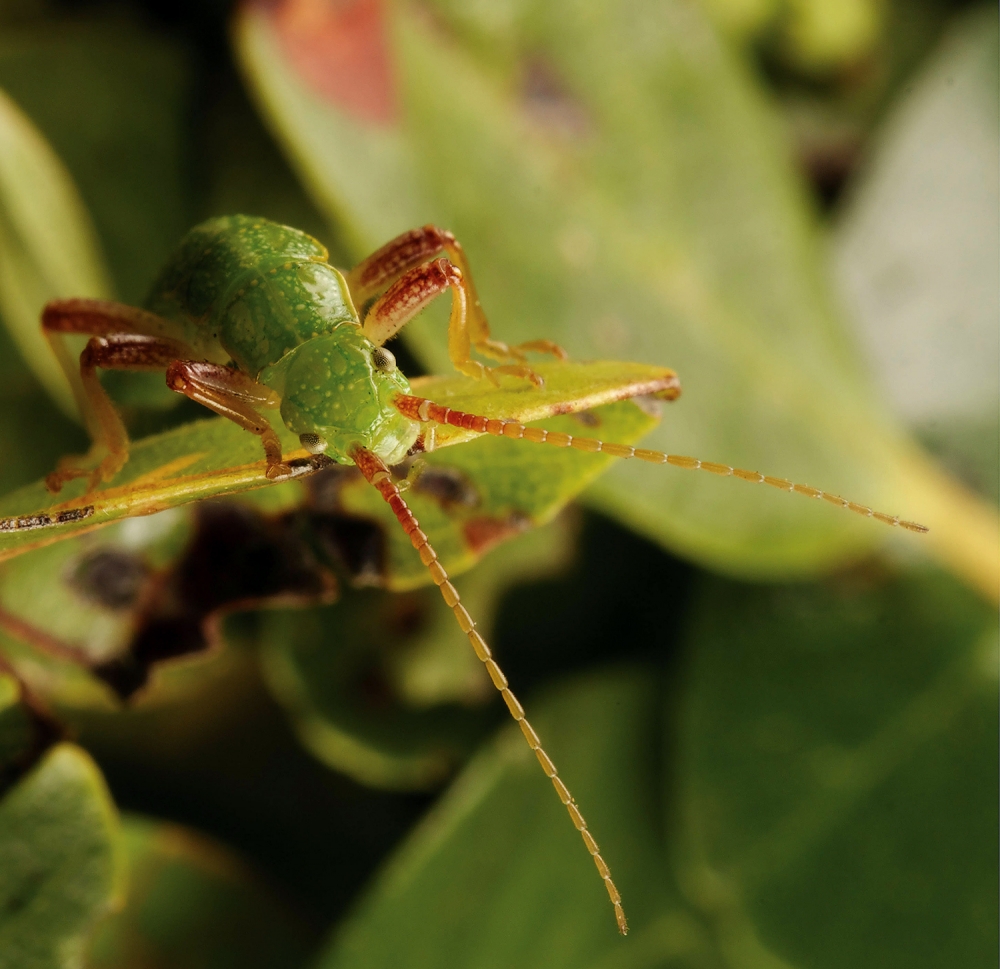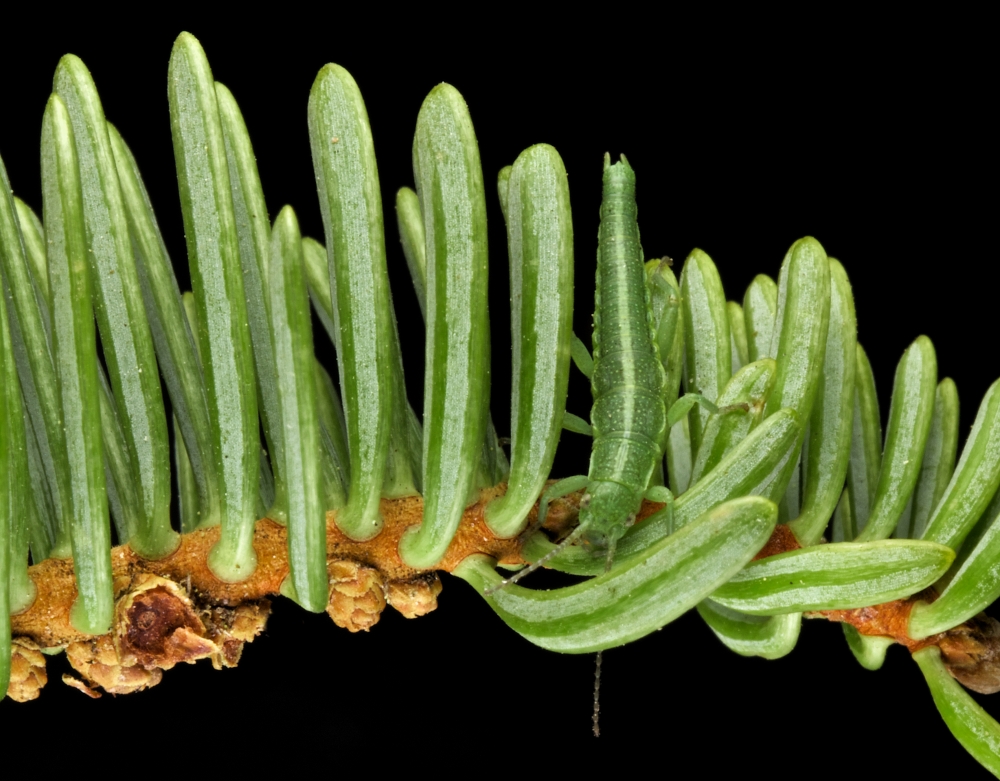Chemical Sex Appeal

When it comes to choosing a mate, an attractive scent is just as important as good looks — at least among stick insect populations. In fact, according to a new study, fragrance is a key factor in their choice of partner.
During nearly two decades of fieldwork, an international group of scientists noticed that stick insects from the genus Timema were unwilling to mate with others from different populations and species. The new research explains why, when looks are deceiving, the insects are still able to recognize — and demonstrate a preference for —mates from the same species. The findings appear in the journal Nature Ecology and Evolution.
“The paper combines what we know about the forces that contribute to the population changes of walking sticks,” said co-author Cristina Sandoval, a biologist and director of Coal Oil Point Reserve, one of seven UC Natural Reserve System locations overseen by UC Santa Barbara. “These walking sticks use smell to choose their mates and they discriminate between different populations based on this chemical sex appeal.”
The research team studied 11 different Timema species in more than 100 populations of stick insects. They discovered that mate choice appeared to be based on a mixture of particular chemical compounds on their skin that made them more, or less, attractive to each other. These oily chemicals protect the insects’ bodies and prevent them from drying out, but they also play an important role in sending signals to attract suitable mates.
The investigators sequenced more than 1,000 individual Timema genomes. This enabled them to correlate DNA changes with changes in physical traits such as color patterns or scent.
“We know from previous studies that a predator’s discrimination on color pattern selections contributes to the beginning of the changes in the DNA, but only on the specific gene that determines color pattern,” Sandoval explained. “Changes in Timema sex appeal chemistry caused an even bigger chunk of the DNA to change, so that looks to be a more important trait for the formation of species in this genus.”
In evolutionary terms, the ability to avoid mixing genes with other species may evolve to improve survival of the offspring. Natural selection plays a large part in this. For example, if an insect population has developed an effective camouflage that prevents birds from eating them, a new population of noncamouflaged individuals moving into the area would not make good mates as their offspring may not be camouflaged.
However, natural selection doesn’t necessarily provide the entire picture. Sexual selection to mate with the same type reinforces the segregation of the populations. For walking sticks that sexual selection appears to be based on their natural perfume.
To confirm the importance of this chemical attractant, the scientists studied what happened when female stick insects were artificially perfumed with chemicals either from their own or from a different species. They found this directly affected how attractive they were to males.
“We think these skin chemicals are the next step in speciation,” says co-lead author Patrik Nosil of the University of Sheffield in England. “Even if the insects survive when placed into a different environment, the chemicals on their skin provide the next barrier to them mixing their genes.”
But scent is not a foolproof guarantee of species differentiation. Stick insects are still likely to occasionally mix and mate between populations even when they differ chemically.
“The fact that we have been able to map DNA changes to adaptations in the environment means we may be able to predict what traits are the most important in contributing to the formation of new species,” Sandoval said. “This walking stick was very common in the Santa Ynez Mountain and yet unknown to us until 20 years ago. Surely there are other species out there that can teach us more about evolution and the formation of species.”





